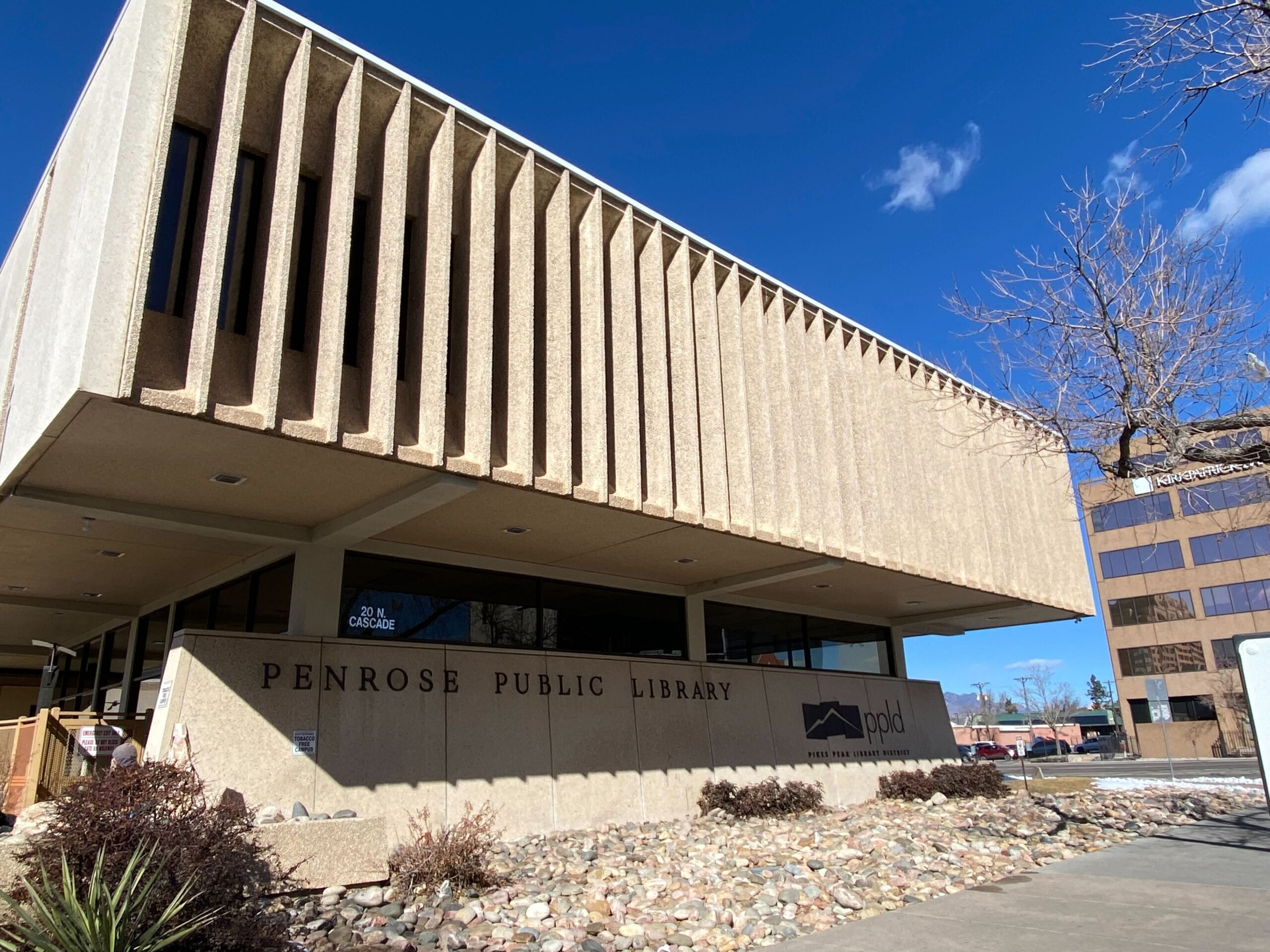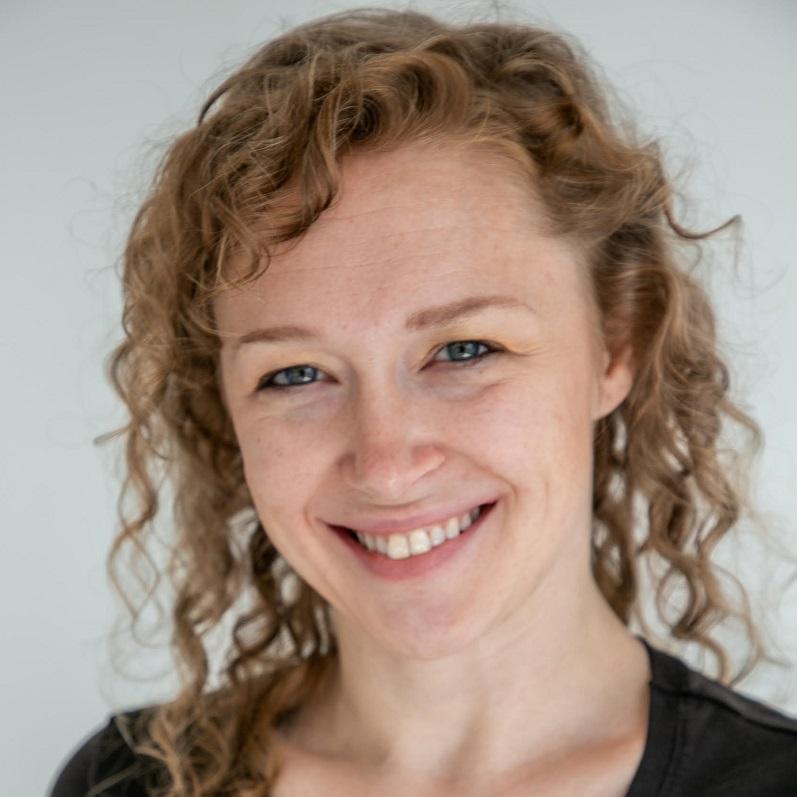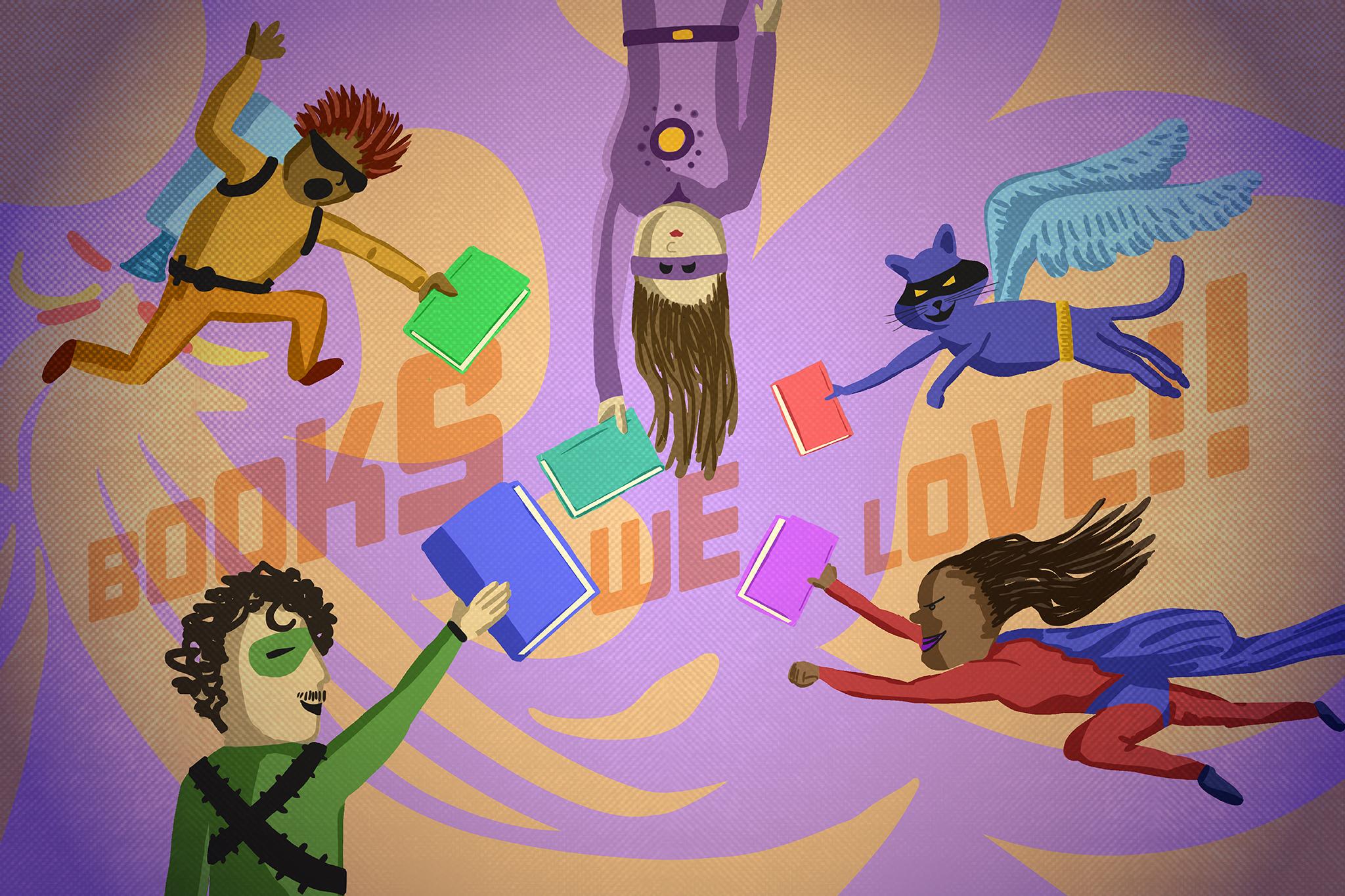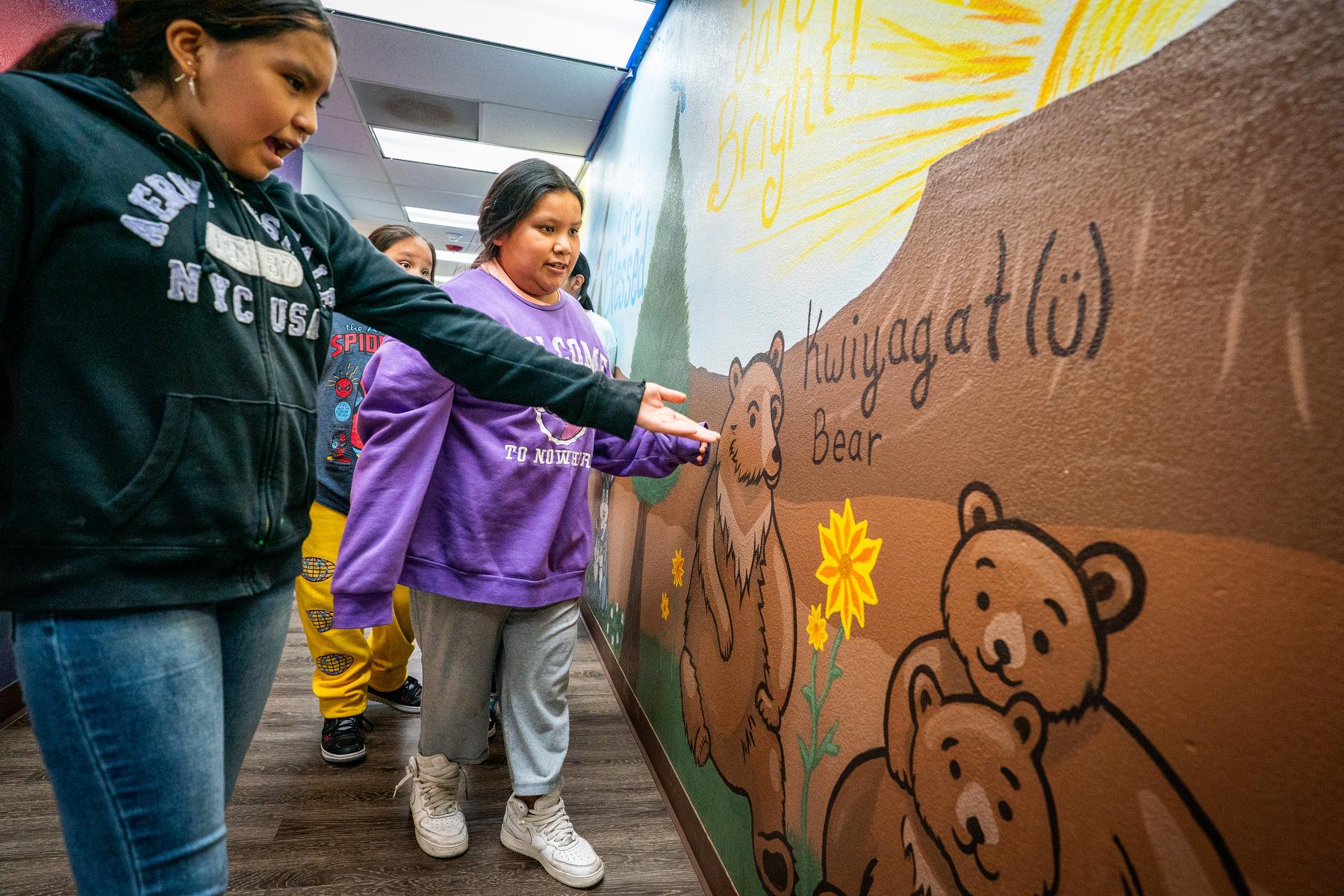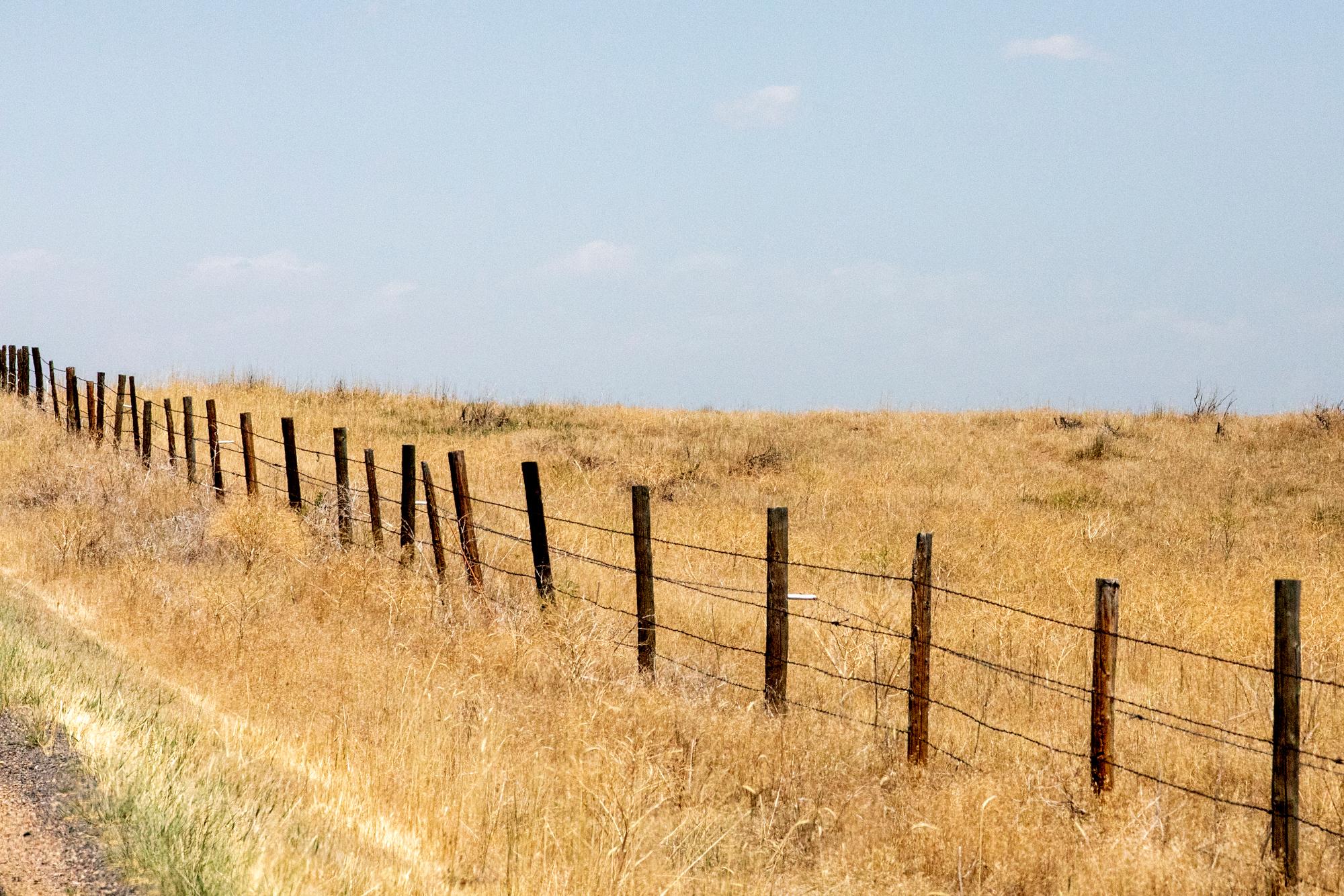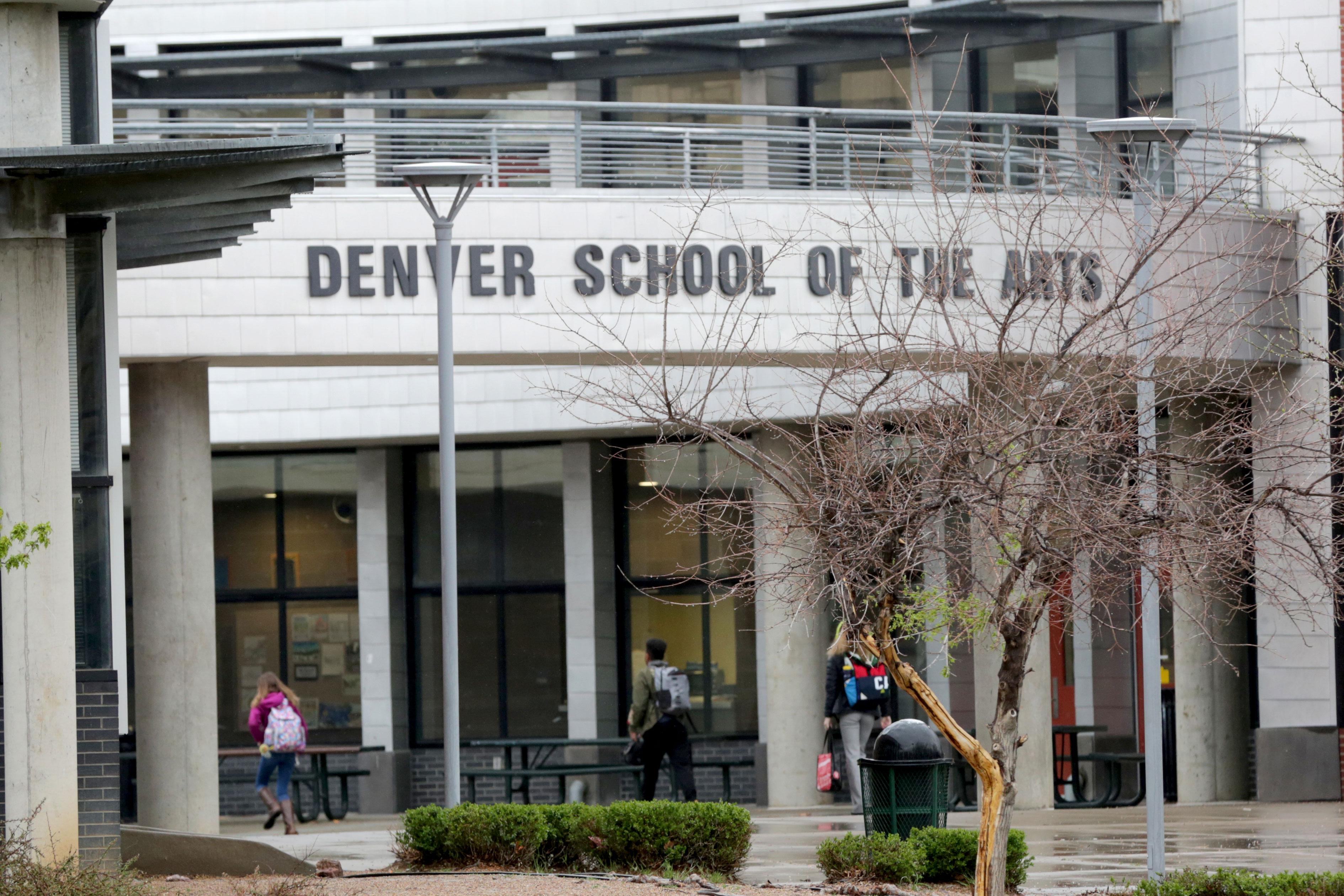

Two longtime dance teachers at the prestigious Denver School of the Arts resigned in January after a five month investigation into allegations of an abusive educational environment.
Teachers in another department — that of vocal music — were investigated at the same time, but those individuals returned to their positions.
The Denver School of the Arts is a public secondary magnet school where children must survive competitive auditions to get in. Artistic talent reigns in the school of 1,100 students, though it is also prized for its rigorous academics. CPR News spoke to current and former students, parents and faculty about the abuse complaints — some of which go back more than a decade.
Current students interviewed for this story, many of whom asked to remain anonymous because they fear retaliation, spoke highly of their academic teachers. The dance department, however, could be a scary environment. The allegations of abuse against teachers Michael O’Banion and Alicia Karczewski include:
- A tightly controlled environment of intimidation and fear.
- Students were often berated and shamed publicly.
- Students were made to dance while injured, or dance for long stretches without access to food or bathrooms.
- Students also accuse teachers of relying on excessive and discretionary disciplinary practices.
Recent DSA graduates, who filed complaints with Denver Public Schools, and others interviewed share strikingly similar stories of an atmosphere of bullying, intimidation and fear that also placed some students in physical harm. A former teacher and student say there were complaints of abusive behavior as far back as 2005. But it wasn’t until June 2017 that formal letters of complaint from four families triggered an investigation. The dance instructors were placed on leave later that August, pending the district’s findings. The teachers resigned in early January 2018.
Michael O’Banion said district lawyers presented him with 15 pages of alleged improprieties going back to the beginning of his career at the school. Alicia Karczewski, who faced the same allegations as O’Banion, said she was shocked by the accusations.
“It was humiliating and degrading as a person that cares so much about what I do,” she said. “I care so much about dance.”
The teachers deny the allegations and defend their passion and integrity as arts educators. They say their ousting is part of a larger agenda to dismantle a distinctive, locally-grown dance program.
Principal William Kohut, who became the school’s leader in 2009, declined an interview request from CPR News. Denver Public Schools rejected our request for a copy of the final investigation report, claiming that privacy concerns kept the district from disclosing the documents. Despite dozens of complaints written over the past decade, Superintendent Tom Boasberg said he only became aware of them earlier in the 2017-2018 school year. He trusts Kohut acted appropriately.
“We have looked at it very closely and believed Mr. Kohut, as principal, did look into concerns that were raised with him,” he said. “He did share concerns that were raised with folks at the district level. Folks at the district level also looked into those concerns.”
After the resignations in January, no further information was provided to families until two days after CPR News interviewed Superintendent Boasberg for this story. An email sent to school parents from Denver School of the Arts principal William Kohut and obtained by CPR News formally acknowledged the situation at DSA, the fact that an investigation had occurred and addressed both concerns that the school heard that families were afraid to speak for fear of retaliation and the outcomes of the investigation.
The email states:
Recently, DPS and DSA completed investigations into the treatment of students in two programs after receiving numerous complaints. We reached out to, and received, support from Denver Police as part of these reviews. Ultimately, two educators resigned from their positions at our school and two educators received appropriate action.
As you know, DSA has many amazing educators who put our students’ education and well-being at the forefront of everything they do. When we receive an allegation that an educator is acting contrary to our core values as a school district, we take such concerns very seriously. We worked diligently with the district’s human resources team to look into every allegation raised and interviewed dozens of current and former students, staff and parents.
During this process, we repeatedly heard that some families were not comfortable sharing their concerns. In fact, some waited until after their students had graduated to voice their complaints, fearing retaliation. Other families were uncertain about whether their students had been treated appropriately, particularly in areas where they themselves had never received instruction or training.
Recipients were assured that the school had re-trained all staff on mandatory abuse reporting, that staff were offered de-escalation of conflict professional development sessions and that the faculty handbook was updated to “ensure there is clarity around appropriate practices.”
For the past two months, CPR News interviewed more than 20 students, parents, teachers and staff to understand what happened within the dance program at DSA and the atmosphere that led to the accusations.
A Hair-Trigger Temper
Since she was 5-years-old, Clarity MacKay loved to dance. She graduated as a dance major from the Denver School of the Arts in 2006 – 12 years ago — and never danced again.
“Honestly, I’ve blocked out so much of that time because it was really painful,” she said. “Up until five years ago is when I stopped having nightmares about Michael [O’Banion].”
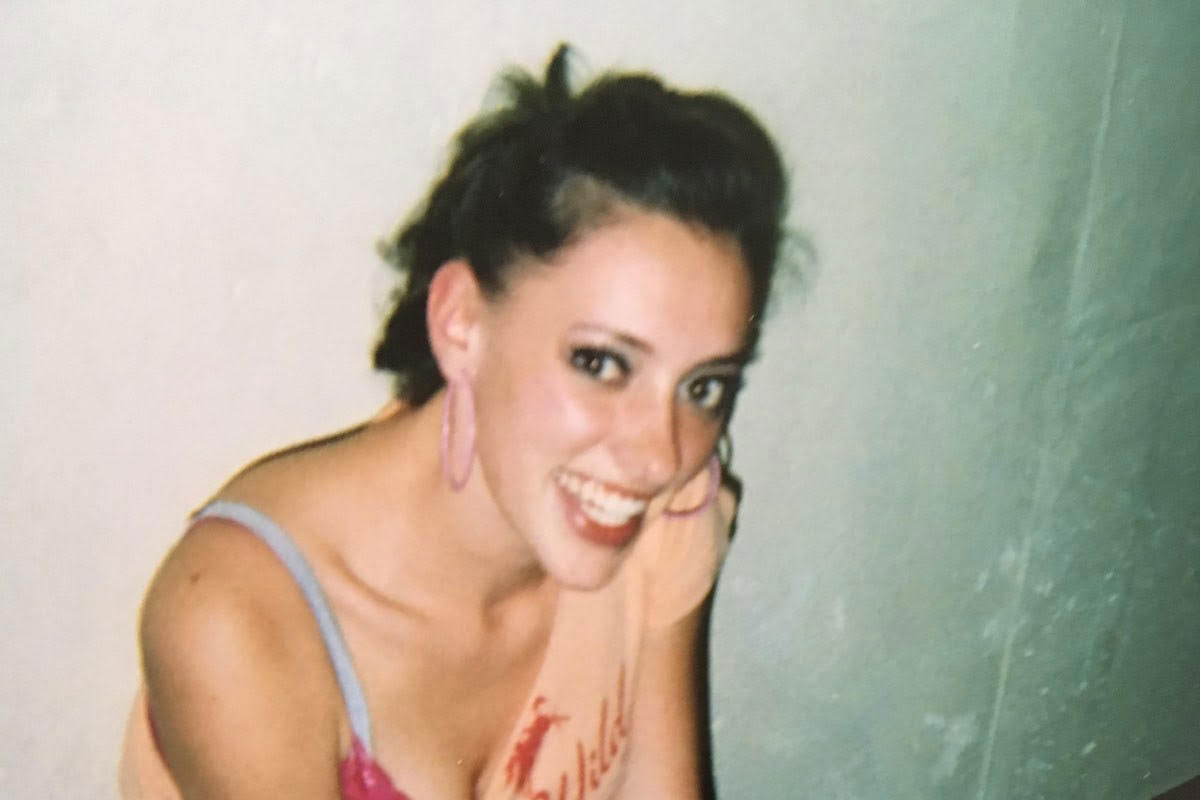
MacKay, who was not one of the complainants and agreed to speak on the record about her experience, remembers him as a “very, very intense person.” The dance program at Denver School of the Arts had been under the direction of O’Banion since 1993. He set high standards and strict rules.
Daily grades could plummet to zero if you brought the wrong tights or wore a T-shirt a shade lighter than black on the wrong day. If you missed a class, even if you were sick or injured, the result would be a one-page handwritten research paper assigned for each class missed. Strict, yes, but there were also things that didn’t seem normal, MacKay said. If you showed up sick to avoid being downgraded, for example, “you were definitely made to dance.”
MacKay said you never quite knew when O’Banion was going blow up in anger. One incident that MacKay related occurred back in 2003, after DSA had moved to its new northeast Denver facility. It was the first time students got to wear serious stage makeup during a performance and MacKay remembered O’Banion approaching an African-American dancer.
“He kept screaming that her face was washed out and she needed more makeup, more makeup,” MacKay said. “And you know, she was really upset and crying offstage.”
The allegations describe a tightly controlled environment where kids were often berated, belittled, and shamed. Of the students that spoke on the condition of anonymity, one described a climate where they “had panic attacks before going into class,” because they were so scared. They said the constant abuse from the teachers involved “caused irreparable harm to both my body and psyche.”
Shaming was done privately and in public. One student spoke of a public example when a fellow dancer who was under a lot of stress broke down and became a target.
“In front of everyone Mr. O kind of screamed at her, ‘Stop crying. You don’t need to be crying right now. I can’t believe you’re such a baby. Are you really crying?!’” they said.
The girl sought comfort in a friend, and according to the student, O’Banion’s reaction was “don’t hug that person, don’t you dare!” The student found the incident alarming, akin to the shock you have when you “see a parent yelling at a screaming baby.”
“It just isn’t what you would associate someone who is in a position of power, in a position of care,” the student said. “To treat someone who’s having a hard time like that.”
A second former dancer recalled a day when O’Banion, angry at her, told her she would never amount to anything, that she “wasn’t worthy of being at the school, and that [she] was destined to fail… I don’t think I’ve ever felt as much judgment, as much shame, as much humiliation for myself. I was scared to go to school because of this one person.”
A Program Aimed At Real World Experience
When you get into the Denver School of the Arts, parents and kids both say it feels like you’ve won the golden ticket. But “a lot of the abusive, scary environment isn’t what you see as an outsider,” one former student dancer said.
“Onstage it looks incredible,” they said. “The quality of the performances is excellent.”
That push for excellence, however, came at a cost for some students. The dancer recalled a day when a student fainted in class and O’Banion instructed everyone else to keep dancing, something the dancer said was “flabbergasting.”
“There were moments where you almost want to laugh at how ridiculous it was that that was the expectation for us to dance around a collapsed person’s body.”
In his own words, Michael O’Banion said that if a crying student was getting other students off task, his job was to redirect them to focus on their mission.
“My goal was to help them see that you move through that and move on to the joy again,” he said. “But if you say, ‘OK, let’s all stop and focus on this moment of sadness for this one child. Let’s all participate in it. Let’s have a group grieving.’ Then what have I taught? I’ve taught them to stay stuck in that and that you can get attention through negative means.”
Another former student, who attended DSA for a year but later left and complained to the district, called O’Banion and Karzewski’s interactions with children “oppressive.” The individual is now a professional dancer, a career that has involved grueling practices and lots of personalities. They’ve been been lucky with only one bad directress along the way, but “even at that, it was nowhere close to the level they [the teachers] were on… Nothing close.”
Even student dancers who were liked, and hadn’t run afoul of the teachers, said it was traumatic to watch other kids bullied. There was an unspoken rule that you didn’t speak out in class, or later to a parent, if a student was being berated.
One dancer described not speaking up as “one of the most basic survival tactics you learn” in class.
Other students said the teachers told them not to talk to adults about dance class. Several students confirmed that if a parent intervened, teachers would either ignore the student the next day or they faced retaliation themselves.
O’Banion denies this, but said there was a policy that he wanted to hear from students about problems instead of parents. He said he has devoted his life to breaking the stereotype of the “mute China doll” dancer.
“This is an art form that if you do not know how to sell yourself and speak for yourself, you will not survive,” he said. “So we want them to, early on, before they develop a fear of authority, before they develop a fear of the director, fear of the choreographer, a fear of not getting the job, they have experience of success in self-advocacy.”
Students Divided Over Teachers
There are bitter divisions about O’Banion and Karczewski. One senior student, afraid of reprisal because of their critical opinion on how administrators handled the resignations, described Karczewski as “one of the nicest people you’ll ever meet.” She said the teacher was tough, but in a loving way.
“It’s like tough love, because she knows that you have so much potential and she just wants to unlock it for you,” the senior said.
At the same time, the student understands how their peers could have panic attacks regarding O’Banion. Even students who made the allegations admit the atmosphere in the dance studio was complex. The teachers taught some classes separately but were often in the same studio. Students say Karczewski witnessed and abetted in the alleged abusive behavior.
Even the student who experienced panic attacks said both teachers shaped her love of choreography and prepared her for the way improvisation and composition is taught in college.
O’Banion said his goal was to develop self-awareness in dancers about how they moved and ultimately, learn to take responsibility for themselves. Olivia Ooms attended DSA for three years and relayed a positive experience from her time in dance class.
“[O’Banion] was always really big about how ‘you are your own teacher, like we teach you and we will make you like a better dancer, but in the end, you are own teacher’ …not treating us as if we, like we were kids,” she said.
Another student — not one of the complainants — who was in Ooms’ class saw things differently. Even though dance was their great passion, the student came to dread going to class.
“If you were not perfect then your punishment was anger,” she said. “Very manipulative. I’d say. It’s like a kind of a weird way of making us trust them with anger.”

It’s hard to pinpoint, students say, what triggered the teachers’ anger and why they would, in their view, hate certain students so much. Even those who liked the teachers, like senior Sebastian Medina, confirmed that students were picked on.
Medina believes the teachers care about their students though. He appreciated their “life lessons,” and said O’Banion supported him on occasion and taught him a lot about creativity. Medina did point out that much of his time in the dance department was “a very up and down rollercoaster ride.” He said he’s one of the few who wasn’t afraid of the teachers, but he did feel belittled and dumb at times. He almost quit.
“Lots of talking down to,” Medina said. “They wouldn’t even hold back on sixth graders. The worst part about it, is they would both do it and they would have the little wink signal to each other. I was like, ‘Wow, you should not do that at all.’ It definitely felt like bullying a lot of the times.”
For her part, Alicia Karcewski denied that students were picked on.
“There are kids that needed my attention more than others and each student needs attention in a different way,” she said.
Allegations Of Physical Duress
There are allegations that five-hour dance rehearsals would sometimes occur with no break or food. Students as far back as 2010 said the teachers routinely went through their backpacks and threw out food. Complainants referred to teachers denying them access to bathrooms at times. Older students said grades were docked if they didn’t show up for rehearsals that cut into lunch time.
“Professionalism” was the rationale teachers gave for some of the strict behavior, according to one former dancer who was not a complainant.
This dancer said many students had summer fellowships or worked part-time with professional companies, and dance companies “don’t take food away from kids who are starving because they haven’t eaten in six hours.”
If a student felt sick, several former students reported O’Banion would tell them to go make themselves vomit and dance. They’d have to, in dancer parlance, dance “full out,” according to former students.
A doctor’s note for an injury got a short excusal but students say never for the duration of the injury. One remembers “having joints hurt, having hips hurt in class, [and] still having to dance.”
Another former dance student who injured their ankle said they were made to dance in their boot cast.
“They made me work my foot that wasn’t in the boot, like kicking, spinning, all that stuff which was extremely difficult — one side will overcompensate which can throw off how the injury is healing,” the student said.
For some students, serious injuries meant dozens of one-page papers for each day they were not dancing. Other students say they got adequate time to heal.
O’Banion said students always had access to a bathroom and water and he was conservative about injuries, waiting until dancers were both emotionally and physically ready to go back — and until the school nurse gave the OK.
“The reality in the performing arts is there are injured dancers, injured athletes performing all the time, but they learn how to compensate,” he said. “They learn how to work through it. Now, I would never ask a child who’s injured on a doctor’s note to defy the doctor’s note, but I’ve never had a doctor’s note that says, ‘This child must sit immobile for the whole day. This child is not allowed to physically move.’ If they’re that hurt, they shouldn’t be at school.”
A Delayed Response
The question for some parents and students is this: If there were file folders of complaints against the teachers about an intimidating environment, why was it allowed to go on for so long? Clarity MacKay was a volunteer assistant to a dean before she graduated in 2006 and said school administrators were familiar with the atmosphere in the dance department.
“There were lots of, lots of complaints filed against them when I was there, but none of them, wherever it doesn’t seem like anything was never acted upon,” she said.
One academic teacher from the time that MacKay was in school confirmed that after multiple kids came to him in tears about dance class he went to the administration with his concerns. They gave him the “cold shoulder.” “We know,” they said. “We’re doing something about it.” That was 2005.
Asked why there was no earlier investigation, Superintendent Tom Boasberg said that over the last decade, “the concerns that were raised did not rise to [the investigative] level until concerns that were raised beginning earlier in this school year.”
Emails obtained by CPR News show that parents, when asking why years of complaints didn’t trigger a district investigation, were told by Principal Kohut that the complaints didn’t have the word “formal” in them. So in June, four “formal” letters of complaint triggered an investigation. Kohut’s response to the parents was not accurate, according to DPS human resource officials. The word “formal” isn’t needed.
Kohut’s second argument was that the teachers’ union was protecting the two dance teachers, and that he couldn’t fight the union. Colorado law allows teachers to be represented by unions when complaints are lodged, but it doesn’t prevent an administrator from proceeding with an investigation that requires administrative leave.
Aftermath
Both sides are unhappy with the way the school and district handled the investigations and eventual resignations of O’Banion and Karczewski. When seniors started the school year in August, they were told the teachers were on leave. One senior, who did not want to be identified, said the school offered no counseling or a place for students to process the news.
“I’ve never experienced such a disconnect in my life,” the senior said. “We were all in under a cloud of depression basically, because such a major thing had happened and we had no control over it.”

The teachers were a powerful presence in the lives of some of the students, and they struggled emotionally with the departures. Parents asked for counseling for their kids but didn’t get it until nearly three months later.
Parents acknowledge that the school couldn’t give details about why the teachers were no longer at DSA, but by not addressing it, the situation turned into a monster.
“I’ve never seen such emotional devastation and, and to have no one acknowledge that at the school was shocking to me,” said parent Diana Hersh.
At a meeting a school administrator called with seniors about eliminating the tradition of senior dance projects, the situation got worse. Assistant principal Aspen Miles allegedly told seniors that dance underclassmen were accusing the seniors of “bullying.” Final year students disputed that, suggesting to Miles that they talk with the younger students or do a dance project together to try to unify the department.
“She told us that we couldn’t talk to them about it because if they went home and killed themselves, it would be on us,” said one of the senior students. “ I just looked around and we were all crying. Every single one of us was crying.”
Conversations with multiple students corroborated the details of this incident. Miles was asked for comment and responded through Denver Public Schools spokeswoman Anna Alego. The statement provided said that in order to preserve the privacy of students and educators, “we will not discuss the specifics of these allegations. DPS is committed to the safety and well-being of our students.”
Superintendent Boasberg said he “cannot comment on unverified allegations.” But “if there are concerns that are raised about the statements or behaviors of any of our educators, school leaders or teachers we would look into those concerns very closely.”
He said Denver Public Schools’ duty is to ensure students are safe, and when parents and students have questions around supports for students, “making sure that we’re having a full dialogue and communication.”
The April 20, 2018 email to parents from the school asked parents for help to protect students.
One parent, who said her child was bullied at the hands of teachers, asked where the district was years ago when she sought help.
“How many more kids were brutalized, abused, forced to leave because they got no satisfaction when they were asking for help?” she asked. “What does this say about our culture when you have talented individuals who are forced to leave because they’ve been subjected to the abuse of adults who should know better instead of school officials looking at systemic problems within the school?”
While the 2017-2018 senior dance project program was dedicated to the two former teachers, other students in the department said they were happy to see the two educators go.
Clarity MacKay, who graduated 12 years ago and suffered nightmares for years, said the teachers’ departure was both shocking and a relief.
“Shocking that they had been there for that long,” MacKay said. “And relief that they were gone.”
As for the motivation of other students, they spoke out with the hope that children in other high performing arts schools learn to recognize what is normal and what crosses the line. The professional dancer, a student who left DSA but stuck with the career, said children pursuing the arts are already under tremendous psychological stress.
“To have people actually working against you, it’s hell,” the former student said. “In this world, it’s one of the worst things you can have happen to you as a child trying to pursue something.”
Michael O’Banion has no reservations about his teaching style.
“There was a time when my methodology was revered, because it was effective,” he said.
He partially blames parents and a culture where children are treated like “precious cargo.”
“The fact that no one was neutral about my teaching style, my personality, my way of delivering the education to these students is a success in itself.”
O’Banion and Karczewski both believe the allegations mask a larger political agenda that aimed to get rid of them and their seven-year-old developmental program that emphasized creativity and student choreography, rather than simply focusing on dance technique as many other high school arts programs do. In this way, Karczewski believes the allegations, “had been blown up, dramatized, over the top.”
The teachers say their “21st century” locally-grown curriculum was based on composition, improvisation and choreographic skills where student creativity was the central pillar. “But that’s messy,” O’Banion said, because it deals with student emotions. He believes administrators want to return to a 20th century model that is technically focused and adult-driven.
Michael O’Banion plans to continue working in the arts and perhaps teach at a private school. Alicia Karczewski also hopes to keep teaching.
Read More: Teachers Return To Denver School Of The Arts’ Vocal Program After Investigation

